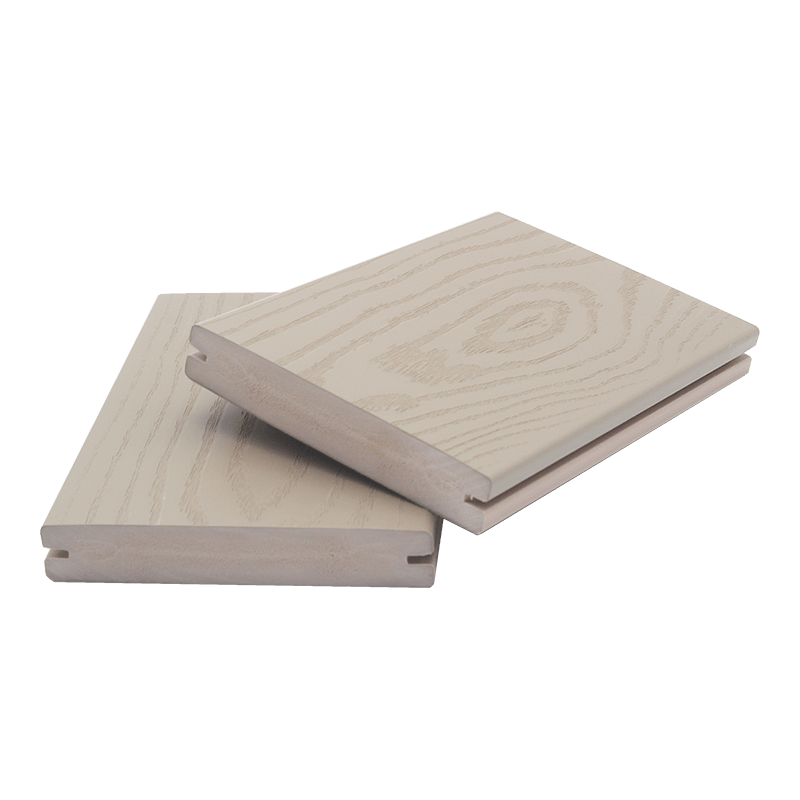 +86-572-8086381 / 8282992
+86-572-8086381 / 8282992  hzjfence1@hzjfence.com
hzjfence1@hzjfence.com  +86-572-8086381 / 8282992
+86-572-8086381 / 8282992  hzjfence1@hzjfence.com
hzjfence1@hzjfence.com 
Jan 07, 2025
When it comes to decking materials, PVC has gained significant popularity for its durability and aesthetic appeal. But what happens when PVC decking is subjected to extreme weather conditions? Whether it's blistering heat, freezing cold, torrential rain, or intense sunlight, understanding how PVC performs in these conditions is essential for homeowners and contractors alike. In this article, we delve into the ways in which PVC decking holds up under the most challenging climates and the reasons it’s often chosen for such demanding environments.
Resilience Against the Heat
PVC decking excels in high-temperature environments. Unlike wood or composite materials, which can warp, crack, or fade under prolonged exposure to direct sunlight, PVC decking maintains its structural integrity. The plastic-based material is inherently resistant to heat absorption, meaning it doesn’t expand, contract, or deform in the way traditional wood might. Additionally, modern PVC decking often comes with UV-resistant coatings that protect its color from fading, ensuring a long-lasting, vibrant appearance.
For those living in regions with hot climates, this is a particularly advantageous feature. The decking remains cool to the touch, offering a comfortable surface for walking barefoot, even during the hottest days. It also resists the warping and shrinking that commonly plague other materials, making it an ideal choice for sun-drenched areas.
Unyielding in Cold Conditions
While heat presents one challenge, the cold is another. PVC decking is just as impressive when it comes to withstanding freezing temperatures. In contrast to natural wood, which can expand and contract with moisture absorption, PVC decking’s plastic composition allows it to remain stable even in sub-zero conditions. Freezing temperatures, ice, and snow do not cause PVC to swell, crack, or splinter.
The material’s resistance to cold also translates to reduced wear over time. When other materials expand and contract due to temperature fluctuations, they often suffer from cracks or surface deterioration. PVC, however, retains its smooth, solid finish, regardless of how low the mercury drops. This makes it an optimal solution for regions that experience harsh winters.
Impervious to Water Damage
Perhaps one of the most outstanding qualities of PVC decking is its resistance to water damage. Unlike wood, which is prone to rotting, warping, and fungal growth when exposed to moisture, PVC decking is non-porous and resists water absorption. This feature makes it particularly valuable in areas prone to heavy rainfall, flooding, or high humidity.
Because PVC does not retain water, it also resists mold and mildew growth. This not only preserves the material’s appearance but also ensures that it remains safe and hygienic. Homeowners who opt for PVC decking can rest easy knowing that their deck won’t warp, discolor, or deteriorate due to water exposure—whether it’s from rain or snow melt.
Protection from Winds and Storms
While strong winds can cause damage to many outdoor structures, PVC decking proves to be robust in stormy conditions. Thanks to its high-impact resistance, PVC is less likely to suffer from the kind of cracking, splitting, or chipping that other materials endure when subjected to severe windstorms. Additionally, PVC’s non-porous surface prevents debris from getting trapped, which can otherwise accelerate the deterioration of certain materials.

For homeowners living in coastal areas or regions prone to hurricanes and strong gusts, PVC decking offers peace of mind. Its ability to stand firm in the face of heavy winds makes it a reliable choice for long-term outdoor use.
Long-Term Durability
The durability of PVC decking goes beyond its ability to withstand extreme temperatures, moisture, and wind. One of the main reasons for its exceptional performance in adverse conditions is its low-maintenance nature. PVC decking doesn’t require sealing, staining, or painting, which are often necessary for wood decks to preserve their appearance and function.
Moreover, PVC decking maintains its structural integrity over time, requiring little more than occasional cleaning to keep it looking pristine. Unlike wood, which may suffer from splinters, fading, and fading over the years, PVC decks retain their original condition for decades, making them a sound investment for anyone seeking long-term performance.
The Verdict: PVC Decking in Extreme Weather
PVC decking stands out as a reliable and enduring material that thrives in extreme weather conditions. Whether facing scorching heat, freezing cold, or torrential rain, PVC decks deliver impressive performance, offering homeowners a high-quality, low-maintenance option for their outdoor spaces. Resistant to water damage, UV degradation, and physical impact, PVC decking provides the ideal combination of durability and aesthetic appeal—ensuring that your deck will
not only survive but thrive, no matter what nature throws its way.
For those seeking a decking material that excels in all climates, PVC stands out as the premier choice, ensuring a beautiful, long-lasting outdoor living space for years to come.